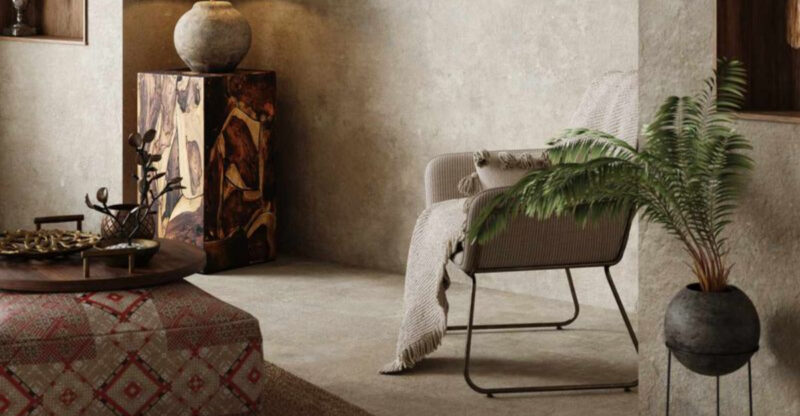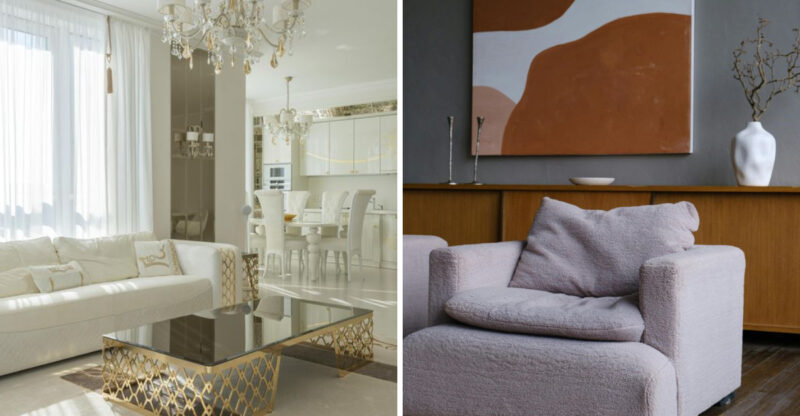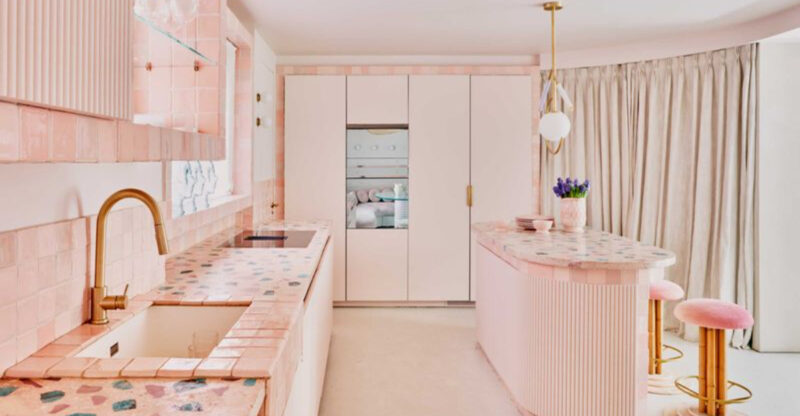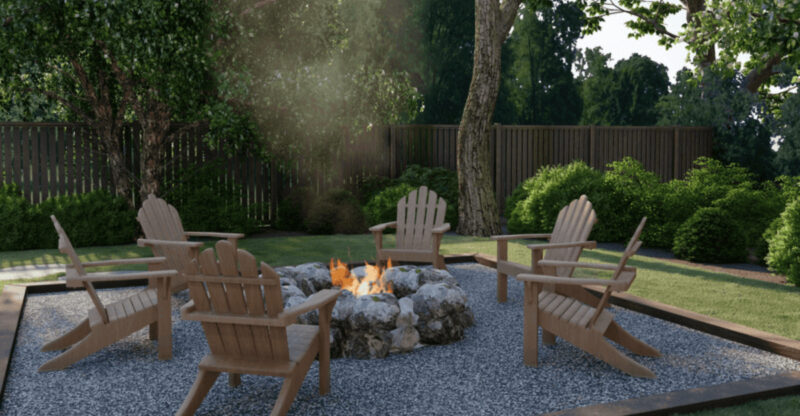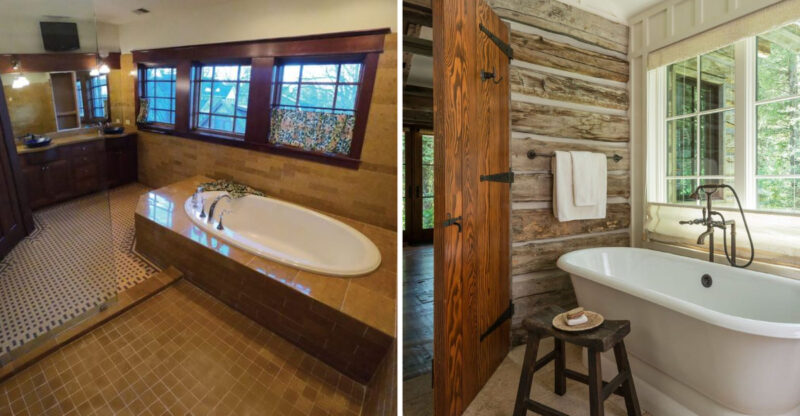19 Game-Changing Home Styling Tricks You’ll Wish You Knew Sooner
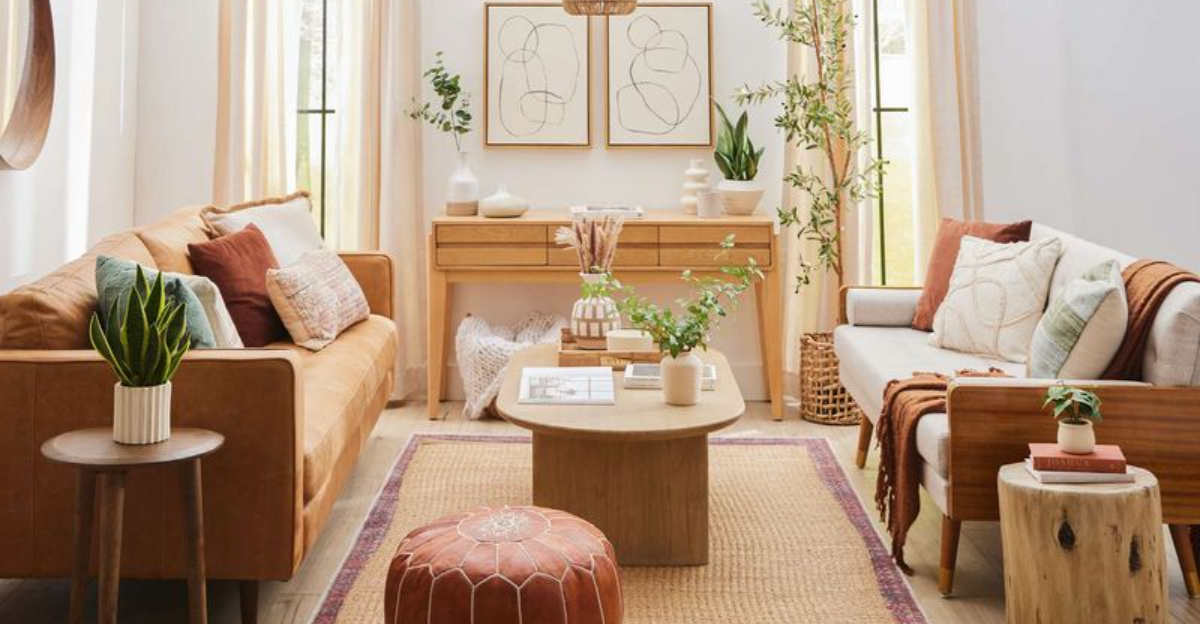
Ever walked into someone’s home and felt that magical ‘wow’ factor but couldn’t pinpoint why?
The secret lies in clever styling techniques that pros use daily. I’ve gathered some game-changing tricks that transform ordinary spaces into magazine-worthy homes without breaking the bank.
These simple tweaks make massive differences in how your home looks and feels.
1. Use odd numbers when styling decor
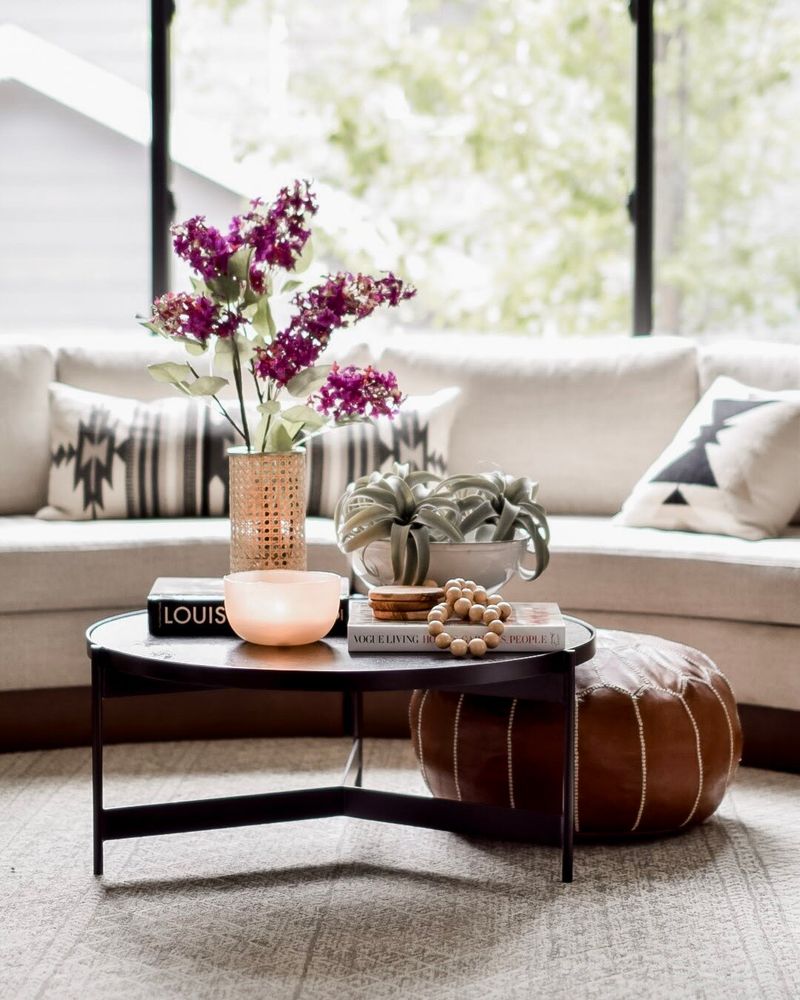
The rule of threes isn’t just designer mumbo-jumbo it actually works magic on shelves and tables! Grouping items in odd numbers (especially three) creates visual interest that even numbers somehow miss. When I arrange candles, books, or decorative objects, I stick to groups of three or five.
This approach feels deliberately styled yet not overly perfect. For maximum impact, vary the heights of your items perhaps a tall vase, medium plant, and small trinket box. The human brain finds odd-numbered groupings more appealing and memorable than even ones.
If you’re styling a coffee table, try a stack of books, a small plant, and a decorative object rather than perfectly symmetrical pairs.
2. Hang curtains high and wide to expand windows
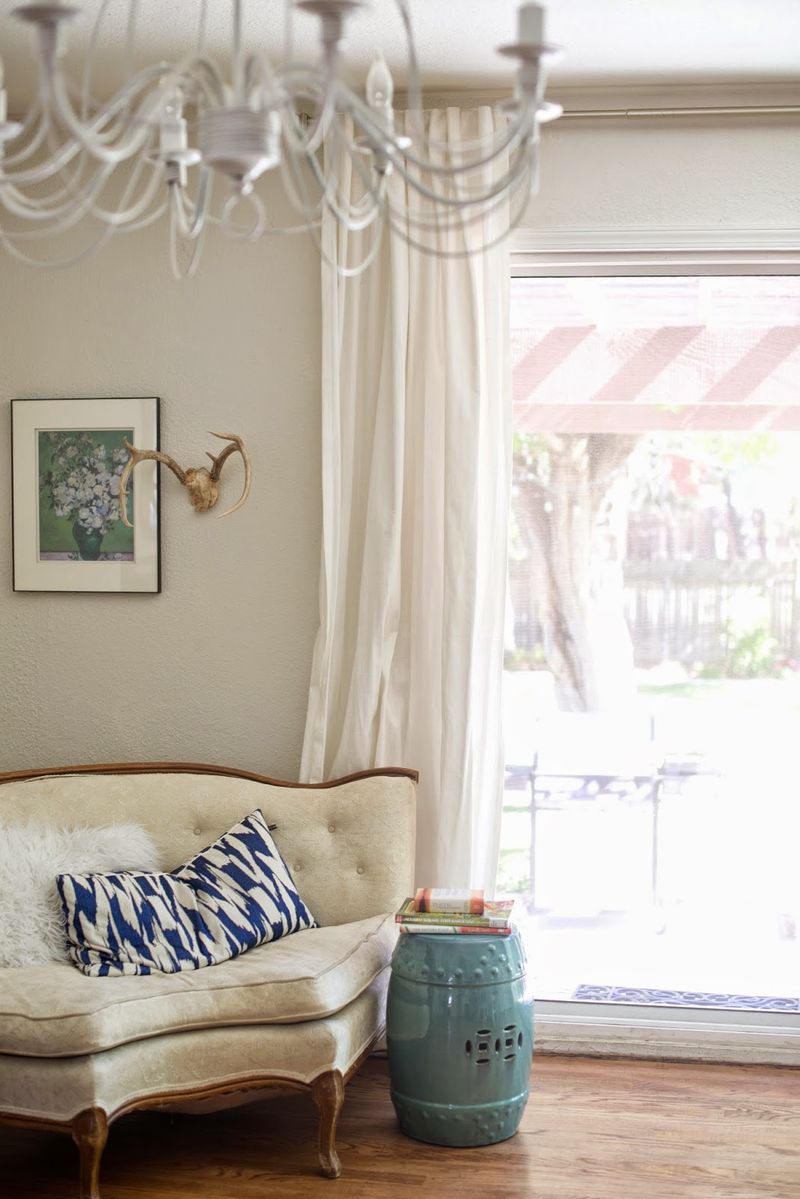
Windows look twice as large with this simple trick! Mount curtain rods 4-6 inches above window frames and extend them 8-12 inches beyond each side. The transformation happens instantly rooms feel taller, windows appear grander, and more natural light floods in.
For years I hung curtains right at window height, wondering why my rooms felt cramped. When selecting curtains, choose floor-length panels that just kiss the floor or pool slightly for added drama. This technique works wonders in small apartments or rooms with minimal natural light.
Bonus tip: opt for curtains with vertical stripes if you’re trying to create the illusion of higher ceilings in a room with low ones.
3. Layer rugs for added texture and dimension

Designers have a secret weapon for instantly cozier rooms rug layering! Start with a larger, neutral base rug (like jute or sisal) and top it with a smaller, more colorful or patterned option. This technique adds incredible depth while defining specific areas within larger spaces.
I’ve used this trick in my living room, placing a vintage Persian rug atop a larger seagrass one. The result feels luxurious and intentional. Different textures create visual interest and tactile contrast that makes spaces feel more curated.
When layering, ensure the top rug is about two-thirds the size of the base rug, and position it at an angle or slightly off-center for a more casual, collected look.
4. Use painter’s tape to map gallery walls first
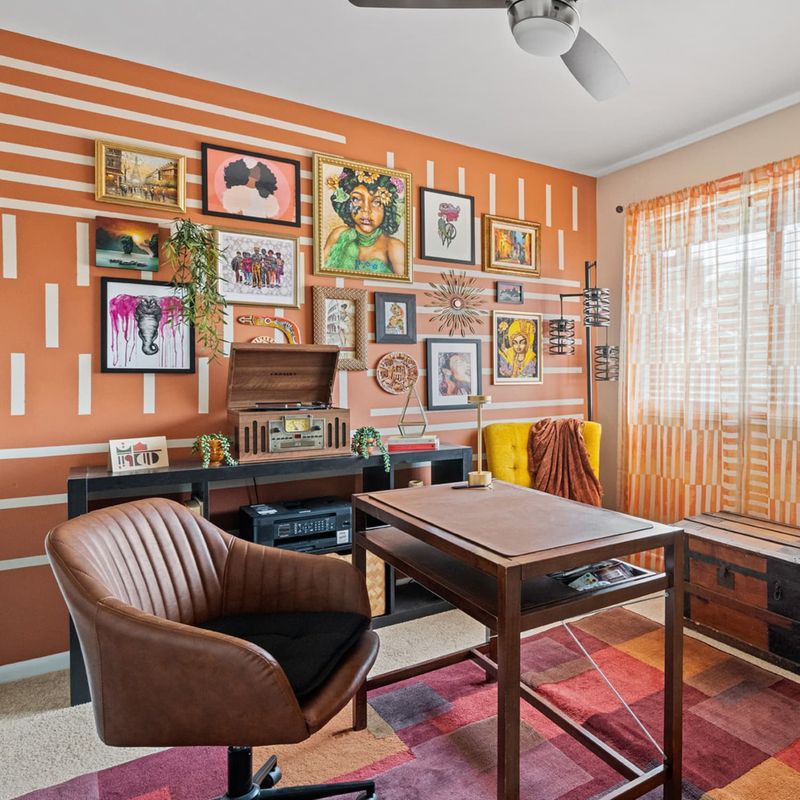
Gallery walls look effortless when done right, but the secret is careful planning! Before hammering a single nail, I trace each frame on kraft paper, cut out the shapes, and tape them to the wall. This lets me play with different arrangements without committing.
If you don’t have kraft paper, painter’s tape works brilliantly to outline where each frame will go. Move these placeholders around until you find a layout that feels balanced. For a cohesive gallery wall, maintain consistent spacing between frames (about 2-3 inches works well).
Another approach is starting with a central anchor piece and building outward. This method creates a focal point and helps the arrangement feel intentional rather than random.
5. Place mirrors opposite windows to reflect light
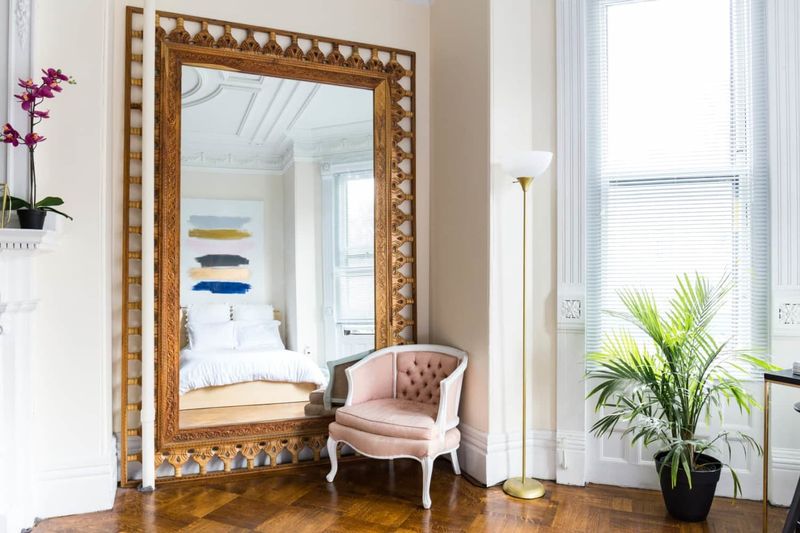
Want to double the natural light in your room instantly? Position a large mirror directly across from your window. This strategic placement bounces daylight throughout the space, making it feel brighter and more expansive.
When I added a floor-length mirror opposite my north-facing window, the room suddenly felt twice as sunny. Mirrors also create the illusion of more space particularly helpful in smaller rooms or narrow hallways. For maximum impact, choose a mirror that’s proportional to your window size.
If you’re dealing with an unusually dark corner, try placing a smaller mirror on an adjacent wall to the window rather than directly opposite this redirects light into shadowy areas that wouldn’t otherwise receive natural brightness.
6. Add dimmers to instantly improve mood lighting
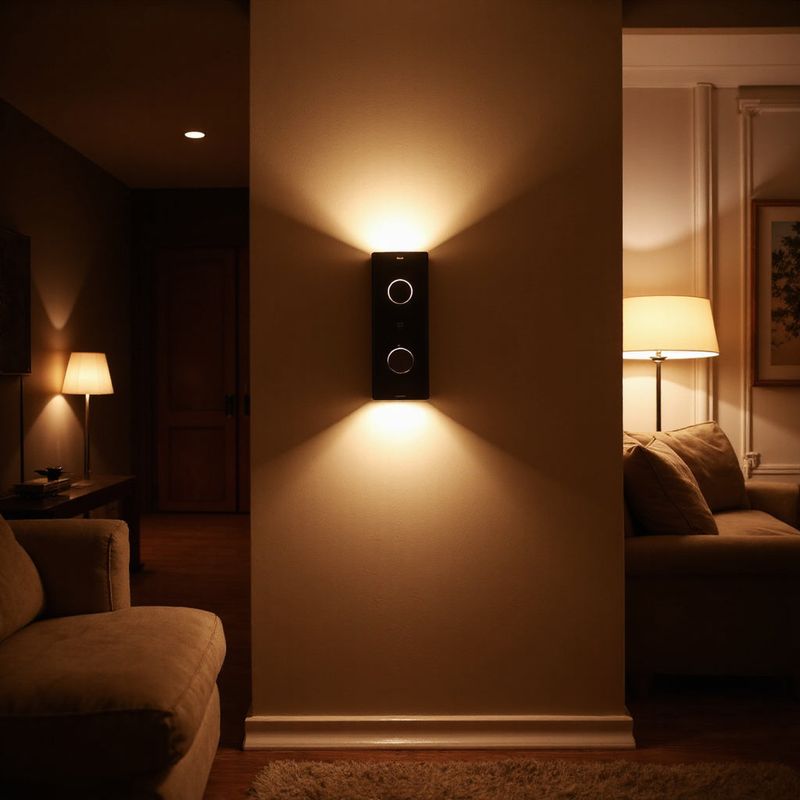
Harsh overhead lighting ruins even the most beautifully decorated room! Installing dimmer switches (which are surprisingly affordable and easy to add) gives you complete control over the ambiance. I’ve added them to every major light fixture in my home, and it’s transformed how spaces feel, especially during evenings.
Different activities require different lighting levels bright for cleaning or cooking, soft for relaxing or entertaining. With dimmers, one fixture serves multiple purposes. For a truly layered lighting scheme, combine overhead dimmers with table lamps and floor lamps at varying heights.
Did you know? Dimmed lights actually use less electricity, so you’ll save on energy bills while creating that perfect cozy glow.
7. Mix vintage and modern pieces for depth
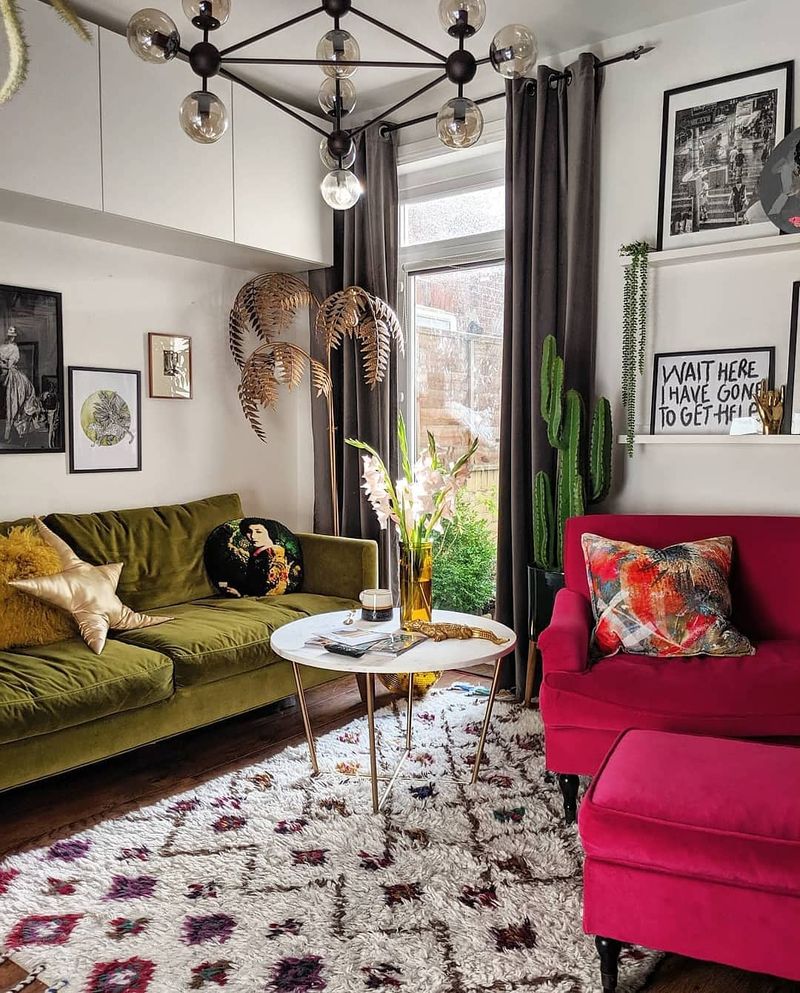
Rooms that look straight out of a catalog often feel soulless. The magic happens when you blend contemporary furniture with character-rich vintage finds! This mixing creates tension that makes spaces feel collected over time rather than purchased all at once.
I love pairing sleek modern sofas with weathered antique side tables or placing contemporary art above a vintage credenza. The contrast highlights the best qualities of each piece. When hunting for vintage items, look for unique shapes, interesting patinas, or craftsmanship details that aren’t common in today’s mass-produced furniture.
Even small vintage touches like brass candlesticks or an old mirror among modern décor add instant personality and prevent rooms from feeling like generic showrooms.
8. Rotate decor seasonally to refresh the look
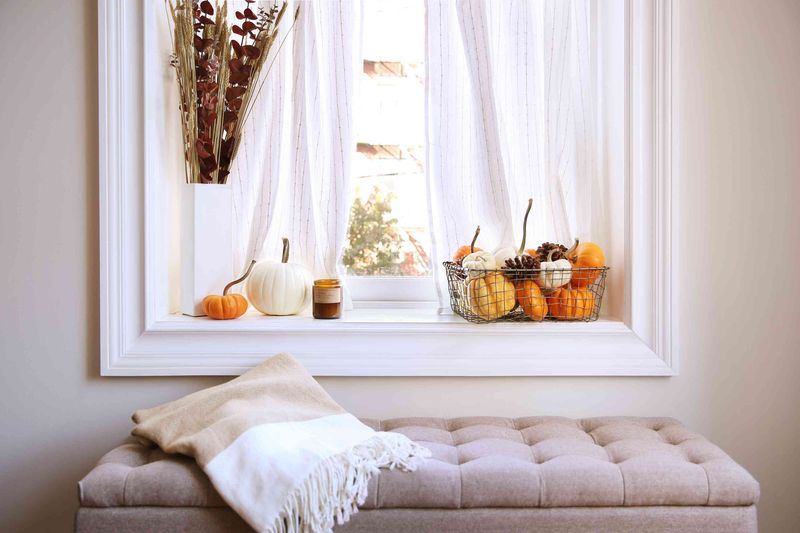
Your home should evolve with the seasons! Instead of complete redecorating, I switch out simple elements quarterly. Lightweight linen throws and botanical prints in summer transform to chunky knit blankets and warmer tones in fall.
Seasonal rotation prevents décor fatigue and keeps spaces feeling fresh. Create a dedicated storage area for off-season items I use labeled bins in my hall closet. This system makes swapping simple and organized. Even changing just throw pillow covers, table runners, and a few decorative objects makes a surprising difference.
Beyond the obvious seasonal shifts, consider rotating artwork or rearranging furniture layouts twice yearly. These larger changes breathe new life into familiar spaces without requiring new purchases.
9. Paint ceilings a soft tint for subtle drama
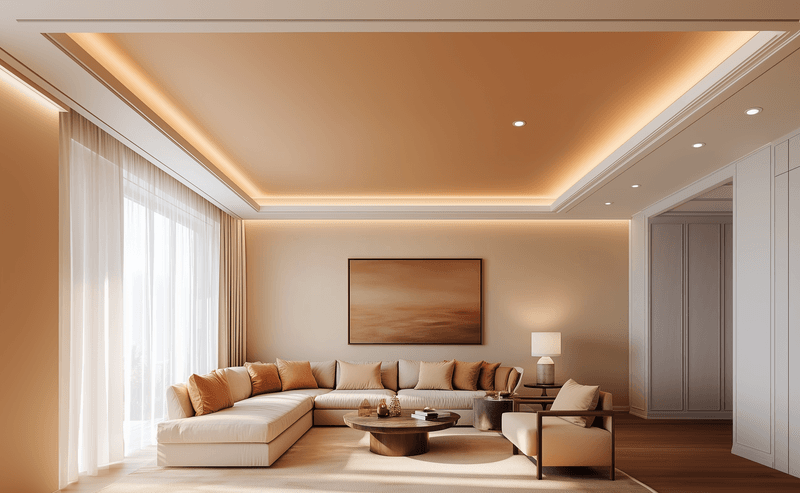
The ceiling is your fifth wall – why leave it plain white? Painting it a soft tint creates unexpected dimension and warmth. I painted my bedroom ceiling pale blush (10% of the wall color), and guests always notice something different but can’t quite identify what.
For beginners, try a lighter version of your wall color or a complementary neutral. This subtle approach adds sophistication without overwhelming the space. Flat paint works best for ceilings as it hides imperfections better than glossier finishes.
In rooms with architectural details like crown molding, a tinted ceiling creates beautiful contrast that highlights these features. Even in small rooms, contrary to popular belief, a soft ceiling color can actually make the space feel larger and more cohesive.
10. Use trays to organize and elevate clutter
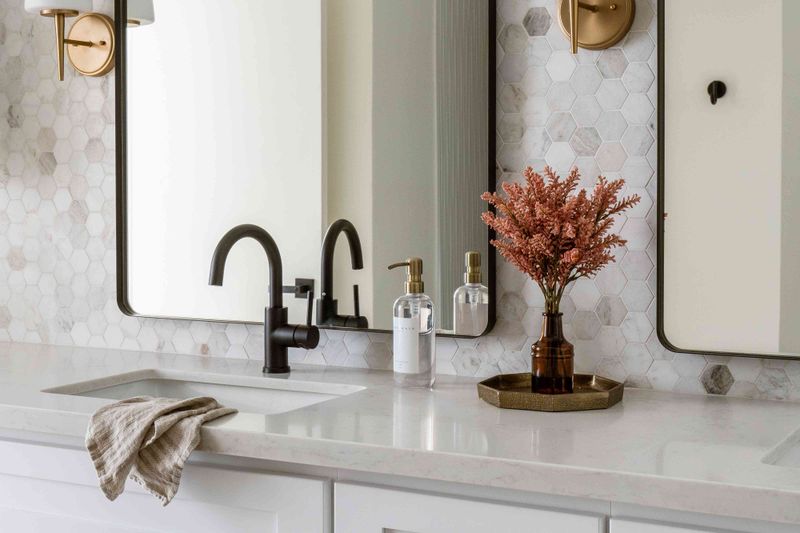
Everyday items instantly look intentional when corralled on a stylish tray! This simple trick transforms necessary clutter into decorative vignettes. On my coffee table, a brass tray holds remote controls, coasters, and a small candle – items that would otherwise look messy appear purposefully arranged.
Bathroom counters benefit tremendously from this approach. Perfume bottles, hand soap, and lotions become a curated collection when placed on a marble or ceramic tray. The defined boundary creates visual organization even when the items themselves aren’t perfectly aligned.
For maximum style impact, choose trays that contrast with your surfaces a wooden tray on a marble counter or a metallic one on a wooden table creates appealing visual tension while keeping essentials within easy reach.
11. Swap out throw pillow covers—not the inserts
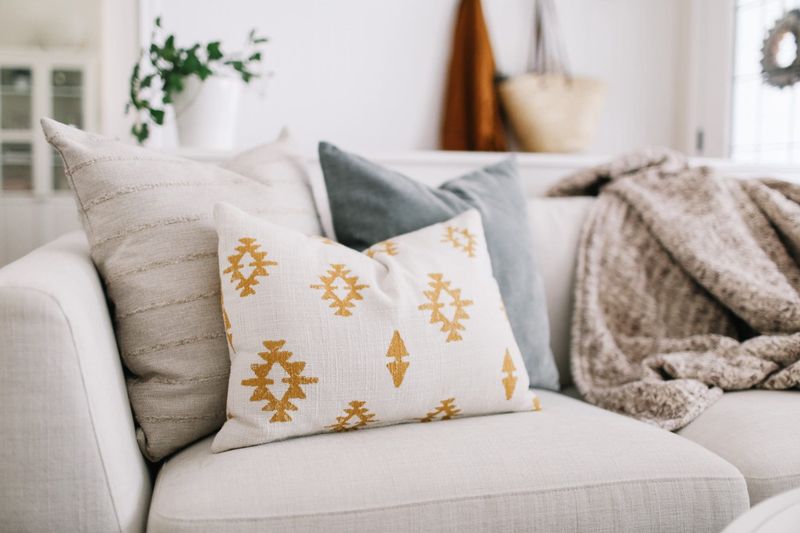
Refreshing your space doesn’t require all-new pillows! I keep standard-sized inserts (usually 20×20″ and 24×24″) and simply change the covers seasonally or when I crave a new look. This approach saves money and storage space while still delivering major style updates.
Quality down or down-alternative inserts might cost more initially but last for years. When choosing covers, mix patterns in complementary colors while varying textures for visual interest. Try combining a large print, a small print, and a solid texture like velvet or linen.
Storage for off-season covers takes minimal space they fold flat in a drawer or bin. This system lets you experiment with trends without commitment and keeps your sofa or bed looking freshly styled year-round.
12. Angle furniture slightly for dynamic layouts
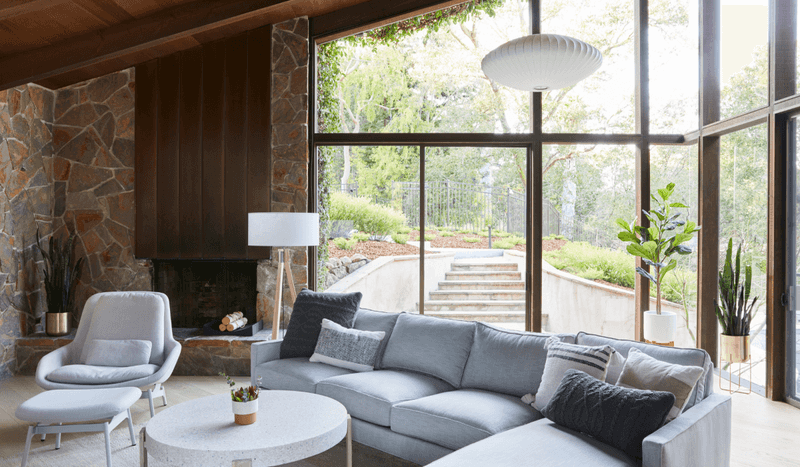
Breaking away from the “everything against the wall” approach revolutionizes rooms! Try placing your sofa or armchairs at subtle angles (just 15-20 degrees) instead of parallel to walls. This simple adjustment creates movement and interest while making conversations flow more naturally.
I angled my reading chair toward the center of my living room rather than squaring it with the wall, and suddenly the space felt more inviting. This technique works especially well in square rooms that can otherwise feel boxy and static. The key is subtlety dramatic angles can make spaces feel chaotic.
Another benefit? Angled furniture often reveals interesting architectural details like windows or fireplaces that might be obscured in strictly linear arrangements.
13. Add greenery in every room—even faux plants
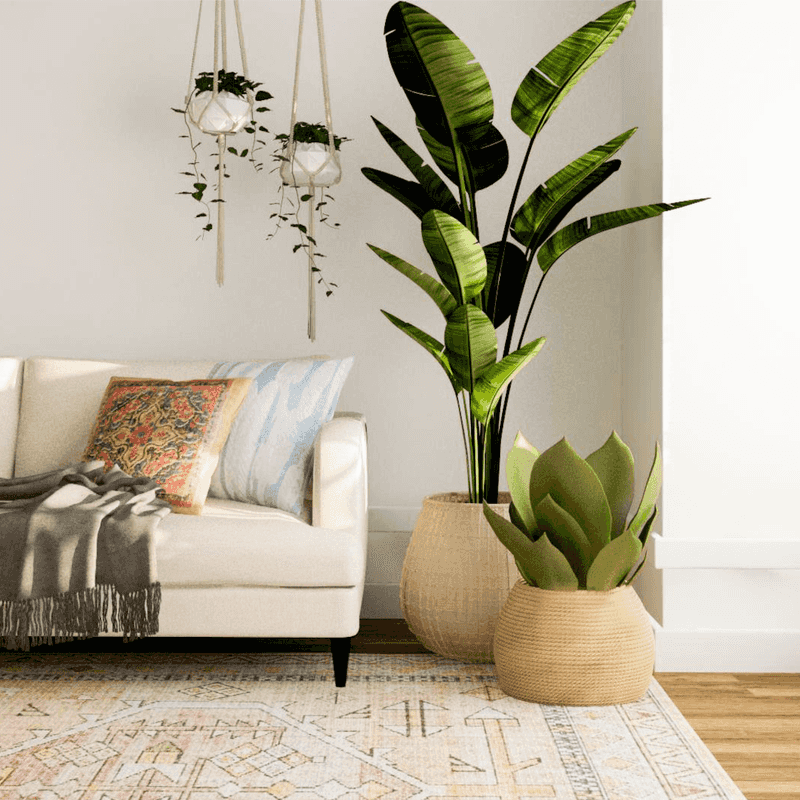
Nothing breathes life into spaces like plants! If you’re not blessed with a green thumb, today’s faux options are incredibly realistic. I mix real and artificial plants throughout my home real ones where conditions are ideal, convincing fakes in challenging spots.
Even one statement plant transforms a room’s energy. Large floor plants like fiddle leaf figs or rubber plants add architectural interest, while smaller varieties like pothos or succulents work beautifully on shelves and tables. When choosing faux plants, look for varied leaf colors, natural-looking stems, and realistic pots.
For the most natural look, dust your artificial plants occasionally and arrange them exactly as you would real ones – near light sources and at varying heights throughout the room.
14. Use peel-and-stick wallpaper for easy accent walls
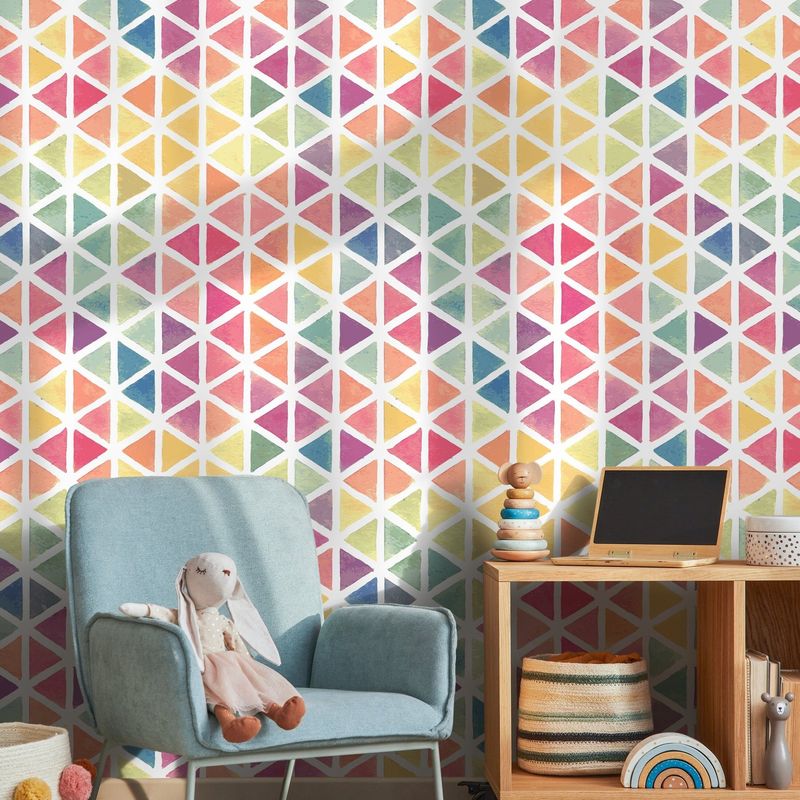
Commitment-phobes rejoice! Temporary wallpaper gives major style impact without permanent consequences. I transformed my home office with a bold geometric print that peels off cleanly when I’m ready for a change. This removable option works perfectly for renters or design enthusiasts who like frequent updates.
Beyond the obvious full wall application, try using peel-and-stick wallpaper inside bookcase backs, on stair risers, or to line drawer interiors for unexpected pops of pattern. Application is surprisingly simple – most brands need just a smooth surface, basic measuring skills, and patience.
When selecting patterns, consider the room’s purpose. Energetic prints work well in active spaces like kitchens or playrooms, while subtle textures complement bedrooms or home offices where calm concentration matters.
15. Keep tones cohesive across open-plan spaces
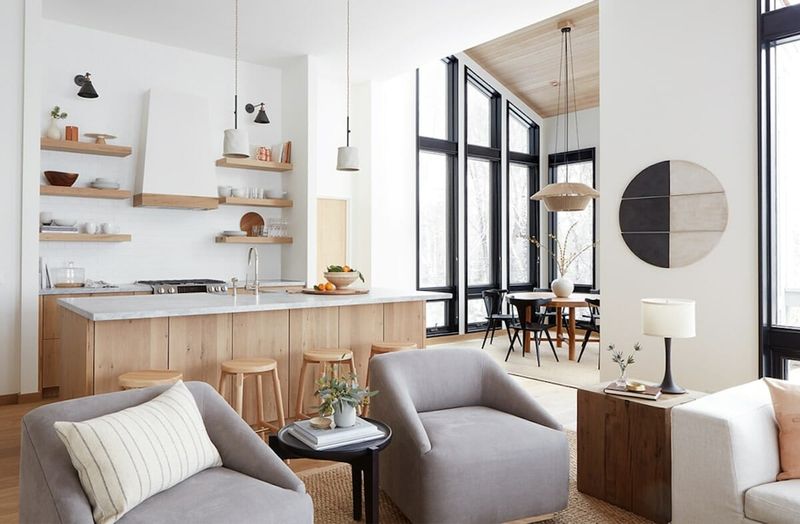
Open-concept homes feel most harmonious when colors flow naturally between zones. Instead of dramatic color shifts between your kitchen and living area, try using variations of the same color family throughout. This creates visual continuity while still defining different functional spaces.
When I redesigned my open-plan downstairs, I chose warm neutrals as the foundation, then added specific accent colors for each zone terracotta in the kitchen, deeper rust in the dining area, and golden tones in the living space. These colors are distinct but related, creating subtle transitions.
Another approach is maintaining consistent wood tones or metal finishes across the open space. These repeating elements become the thread that visually connects different areas while allowing each zone its own personality.
16. Style shelves with books, art, and empty space
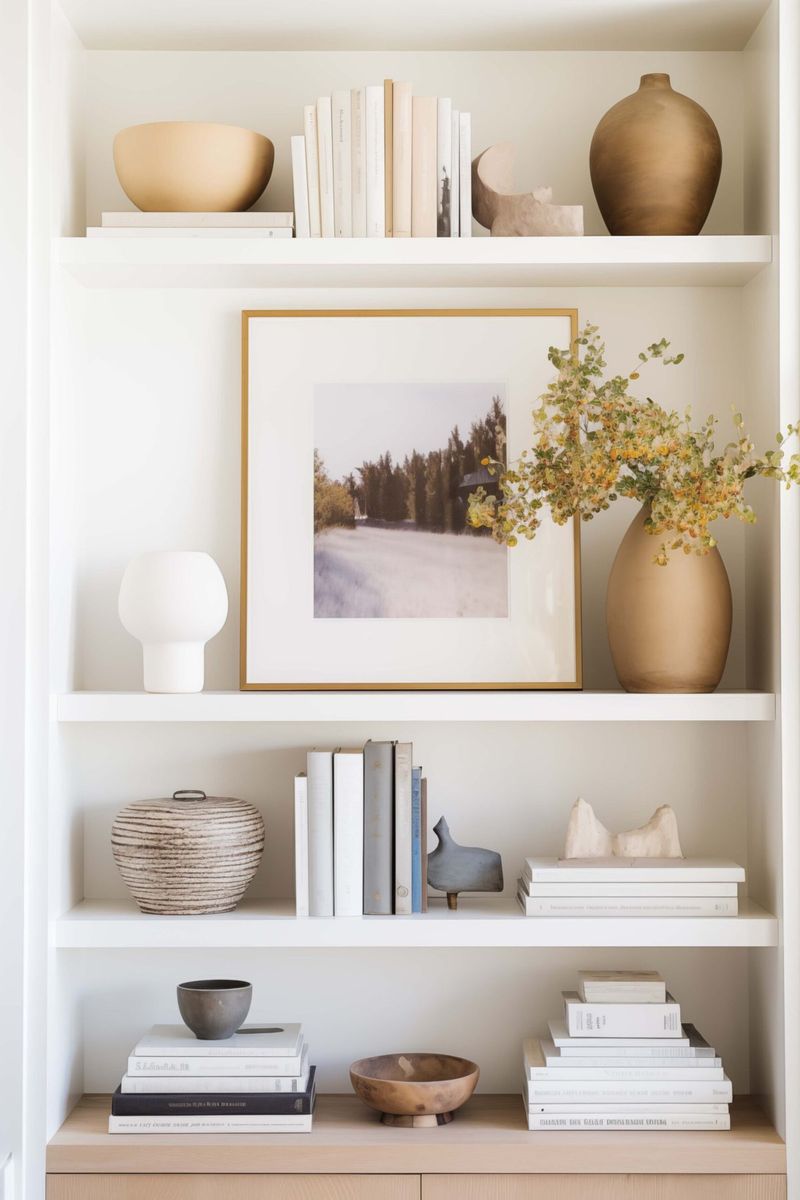
The secret to magazine-worthy shelves? Embracing negative space! Many people overcrowd bookshelves, but professional stylists know that empty areas are crucial for letting decorative elements breathe. I follow a simple formula: books (both vertical and horizontal stacks), meaningful objects, and at least 25% empty space.
Arrange books by size or color depending on your style preference. Use horizontal book stacks as pedestals for smaller items. Incorporate artwork by leaning frames against the back of shelves for layered dimension.
Step back frequently during the process to assess the overall balance. The most common mistake is creating perfectly symmetrical arrangements instead, aim for balanced asymmetry with varied heights and visual weight distributed throughout the shelving unit.
17. Float furniture (not all against the wall!)
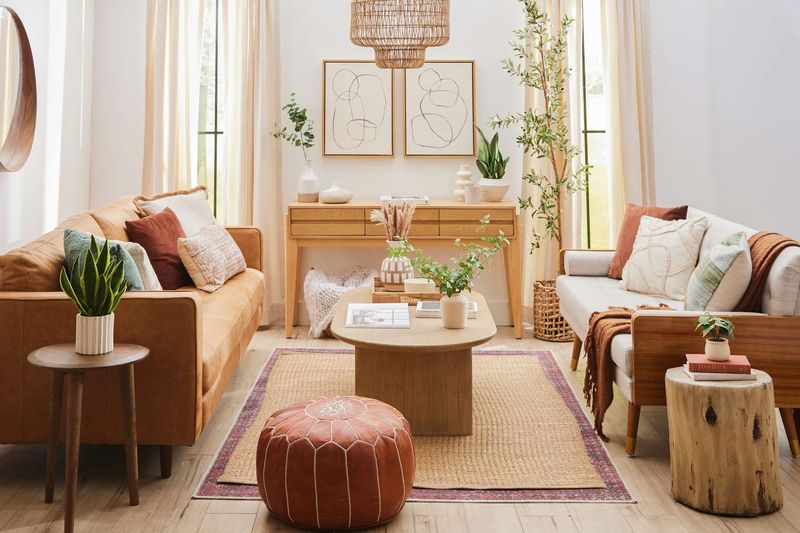
Pushing every furniture piece against walls creates a dreaded “waiting room” effect! Instead, float larger pieces like sofas or beds away from walls to create more intimate, defined spaces. This approach feels counterintuitive but actually makes rooms appear larger and more purposeful.
In my living room, pulling the sofa forward with a slim console table behind it created a walkway and bonus surface for lamps. For bedrooms, positioning the bed on a wall but leaving space on either side feels more luxurious than cramming it into a corner.
This floating technique works especially well for defining separate functional areas within large, open spaces. A floating sofa with a rug underneath instantly creates a distinct conversation zone without need for actual walls.
18. Keep entryways clutter-free for a welcoming feel
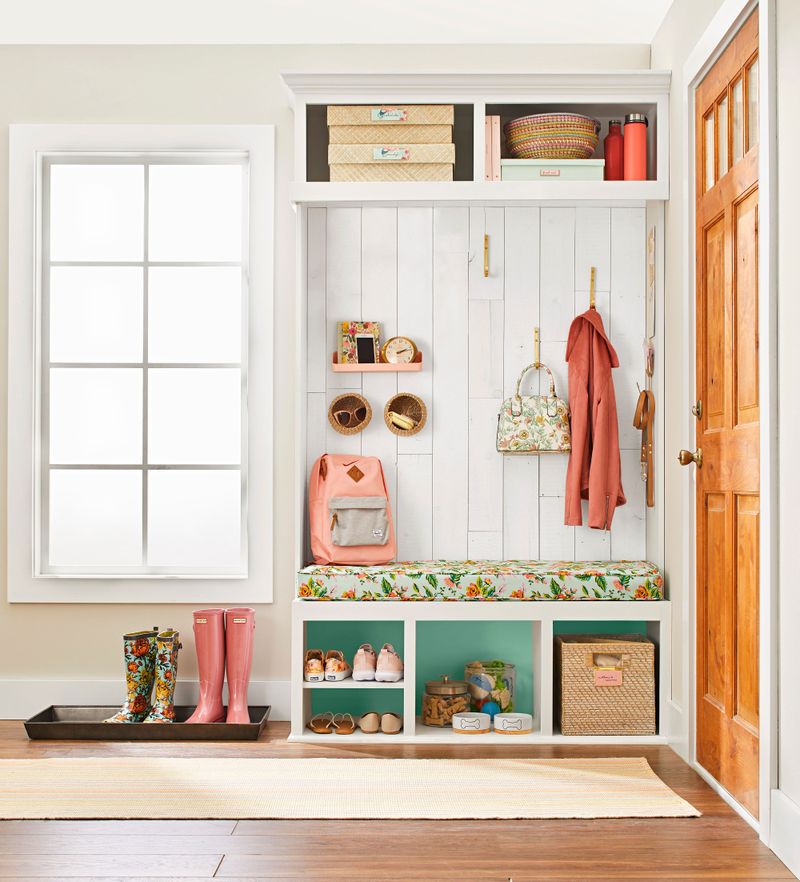
First impressions matter! Your entryway sets the tone for your entire home, yet often becomes a dumping ground for everyday items. Creating systems that prevent accumulation makes all the difference. I installed hooks at different heights, a narrow bench with hidden storage, and a designated basket for each family member.
The key is making organization easier than creating clutter. Position a small waste basket for junk mail, create a charging station for electronics, and establish a daily five-minute reset routine. Even the smallest entryway benefits from a mirror it reflects light, lets you check your appearance, and visually expands the space.
If you lack a formal entryway, define one with a slim console table or wall-mounted shelf and hooks to create a functional drop zone.
19. Incorporate texture in neutral rooms
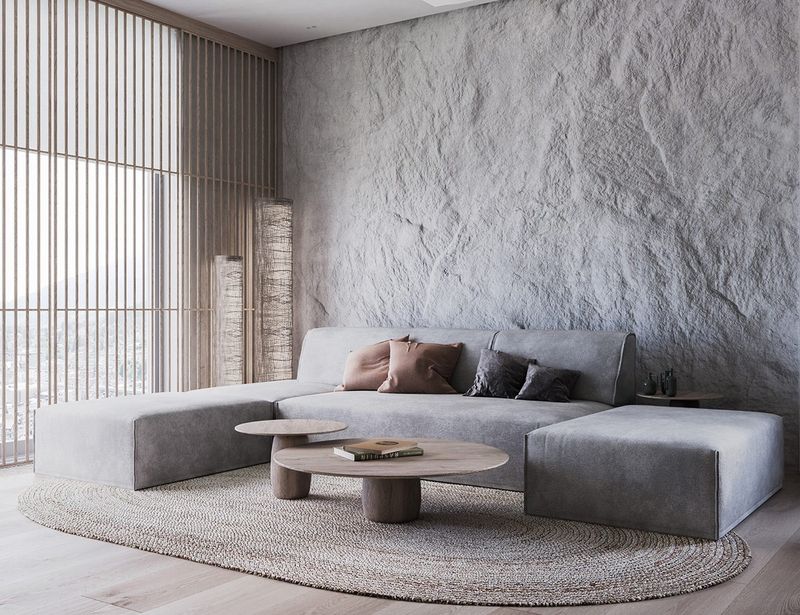
All-neutral rooms risk falling flat without proper texture! If you love calming, monochromatic spaces, texture becomes your secret weapon for creating visual interest. I transformed my cream-colored bedroom by layering a nubby wool throw, linen duvet, velvet pillows, and a rattan headboard all within the same color family but vastly different tactile experiences.
Natural materials add instant texture consider jute rugs, wooden bowls, woven baskets, or stone accessories. Even walls benefit from textural treatments like grasscloth wallpaper, limewash paint, or textured paneling.
When shopping, close your eyes and touch items if a room’s palette is limited, the tactile contrast between rough and smooth, soft and hard, matte and glossy creates necessary dimension.

